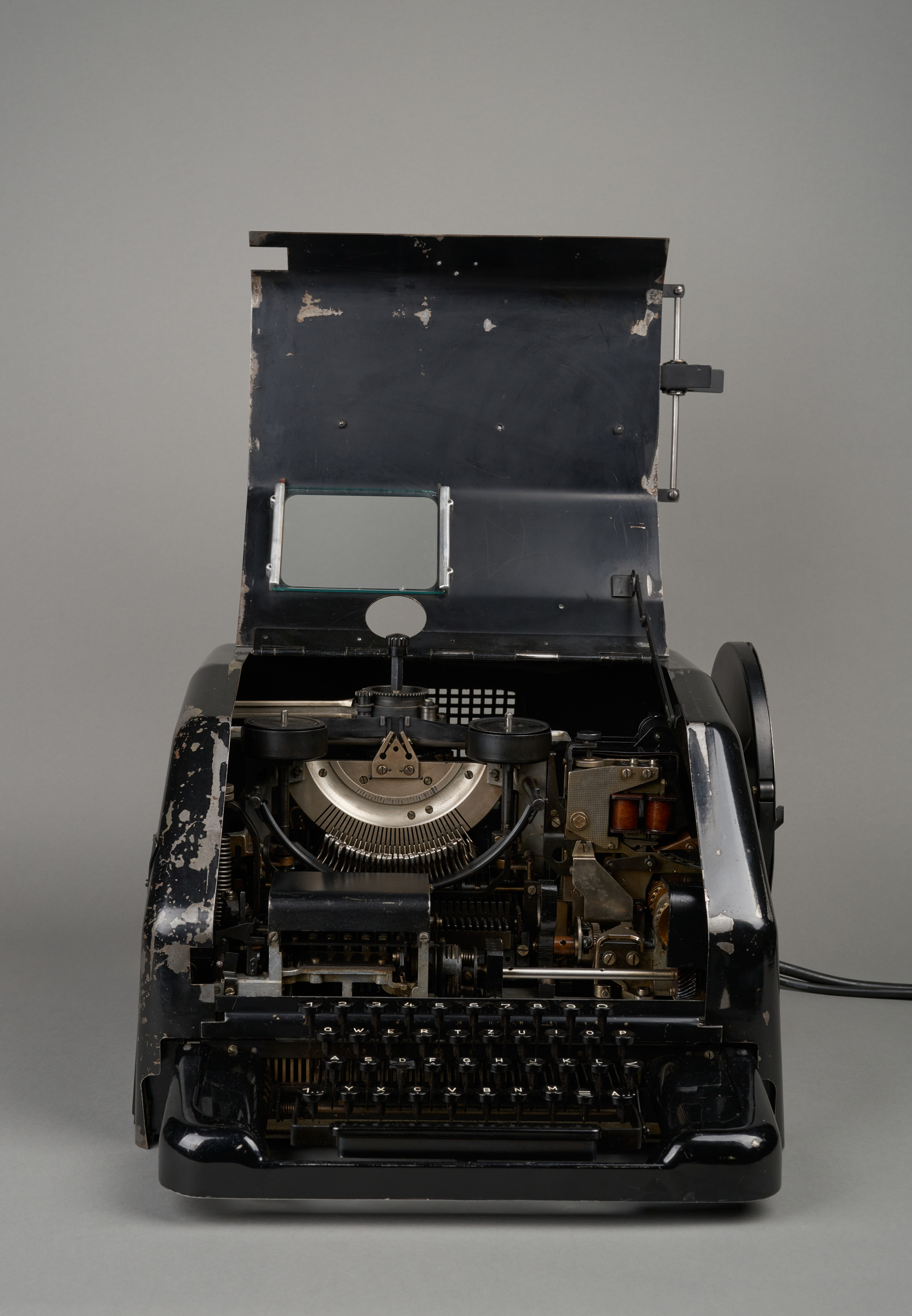
Creator
VEB Gerätewerk Karl-Marx-Stadt R.F.T
Time and place of creation
Time:
1962
Place:
Germany
The teleprinter is a device for long-distance text communication. Unlike the Morse telegraph, it does not require the operator to know a special code – characters entered on the transmitter keyboard are printed on paper by the receiving device. Thanks to this, operation of teleprinters did not require employing qualified staff.
Teleprinters send text in a binary form, much like modern computers. Information is carried by electrical current of specific intensity. The transmission line may be in one of two states at any given moment, determined by the flow or absence of current. The default state is when current is flowing through the line. Pressing a key begins the character transmission sequence, which is signalled by a momentary interruption in the flow of electricity. Next, five pulses are transmitted at regular intervals, the combination determining the character being transmitted. As only 32 combinations can be encoded using five pulses, two are intended for switching registers between one containing letters and one for digits and punctuation marks. This technique was also adopted for communication with early computers, in which teleprinters were used as terminals.
The basic assumptions behind this technique for text transmission were developed in 1874 by the French engineer Jean-Maurice-Émile Baudot. In the original version the device did not yet have a full keyboard and the operator had to manually enter pulse combinations using a set of five patterns. The process was automated in 1901 by Donald Murray.
The RFT 51a – PL 2 teleprinter was manufactured in the GDR by the former branch of the Siemens & Halske factories in Chemnitz. After World War II the establishment was nationalised, and the name of the city was changed to Karl-Marx-Stadt. Despite the expiry of Siemens’ licence, the design of this teleprinter is almost identical to that of the Siemens & Halske products of the 1930s and 1940s. The model presented here was manufactured for a special order from Communist Poland, mostly for the Polish Post. It was equipped with the ability to print the Polish characters “Ł” and “Ż”.
Creator
VEB Gerätewerk Karl-Marx-Stadt R.F.T
Time and place of creation
Time:
1962
Place:
Germany











